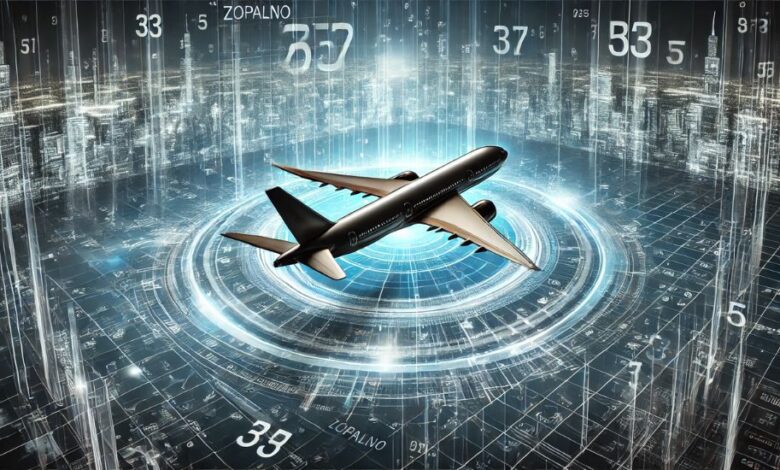Zopalno Number Flight: A New Era in Air Travel

Sphere Magazines welcomes you to explore the fascinating concept of zopalno number flight, a term that has been gaining traction in the world of aviation and beyond. As technological advancements redefine modern travel, zopalno number flight introduces a unique dimension that intertwines innovation, efficiency, and futuristic navigation. But what exactly does this term mean, and how does it impact the future of air travel? In this article, we will explore all aspects of zopalno number flight, from its origins to its potential applications in global aviation.
Understanding Zopalno Number Flight
Zopalno number flight is an advanced aviation concept that integrates numerical precision, algorithmic flight calculations, and state-of-the-art navigation systems to optimize air travel. This approach enhances flight accuracy, reduces delays, and improves overall efficiency. By leveraging mathematical models and digital tracking, zopalno number flight aims to revolutionize how aircraft navigate the skies.
The term “zopalno” relates to a specialized computational process that aligns flight paths with optimized numerical sequences, ensuring precision and stability. In practical terms, this means that flights adopting the zopalno number system can experience better fuel efficiency, reduced turbulence encounters, and highly precise arrival and departure schedules.
The Evolution of Zopalno Number Flight
Historically, aviation relied on traditional navigation methods such as radar, ground-based controls, and pilot-assisted maneuvering. However, as technology advanced, satellite navigation, AI-driven flight planning, and predictive algorithms emerged, shaping the way flights operate today.
Zopalno number flight represents the next step in this evolution. It incorporates artificial intelligence and computational mathematics to create a seamless and efficient air travel system. Airlines utilizing this technology can optimize routes based on real-time atmospheric data, air traffic congestion predictions, and even economic factors, allowing for smarter decision-making in aviation.
Benefits of Zopalno Number Flight in Modern Aviation
The integration of zopalno number flight into the aviation industry comes with numerous advantages, making it a transformative force in air travel:
1. Enhanced Flight Efficiency
One of the primary benefits of zopalno number flight is its ability to optimize air routes through precise numerical mapping. This results in reduced fuel consumption, lower operational costs for airlines, and minimal environmental impact.
2. Minimized Flight Delays
With advanced predictive algorithms, zopalno number flight minimizes delays caused by air traffic congestion, weather disturbances, or inefficient scheduling. By predicting and adjusting flight paths dynamically, airlines can ensure more punctual arrivals and departures.
3. Improved Passenger Experience
Passengers benefit significantly from zopalno number flight due to smoother flights, reduced turbulence, and on-time arrivals. The precision-driven approach enhances safety and comfort, providing travelers with a superior flying experience.
4. Smart Aviation Management
Airlines and aviation authorities can use zopalno number flight technology to streamline air traffic control, optimize fuel usage, and improve aircraft maintenance schedules. This results in cost savings and operational efficiency across the aviation sector.
The Future Prospects of Zopalno Number Flight
The aviation industry continues to evolve, and zopalno number flight is expected to play a crucial role in shaping its future. As AI and big data analytics become more sophisticated, the potential for advanced predictive modeling and autonomous flight systems grows.
Future advancements in zopalno number flight may lead to:
- AI-powered aircraft capable of self-adjusting routes mid-flight based on real-time conditions.
- Fully automated air traffic control systems reducing human error.
- Sustainable air travel solutions utilizing optimized numerical flight paths to lower emissions.
Sphere Magazines predicts that the widespread adoption of zopalno number flight will lead to a more efficient, safer, and environmentally friendly aviation industry.
Challenges in Implementing Zopalno Number Flight
Despite its numerous advantages, the implementation of zopalno number flight is not without challenges:
1. High Development Costs
The research and development required to integrate this advanced numerical system into aviation come with significant costs. Airlines and regulatory bodies must invest heavily in technology upgrades and pilot training programs.
2. Regulatory and Safety Concerns
Since aviation is a highly regulated industry, introducing a new system like zopalno number flight requires extensive testing and certification processes to ensure passenger safety and compliance with international aviation standards.
3. Integration with Existing Infrastructure
Modernizing air travel to align with zopalno number flight requires compatibility with existing navigation systems, air traffic control procedures, and airport management systems. This integration process can take years before it becomes fully operational on a global scale.
Conclusion: The Impact of Zopalno Number Flight on Air Travel
Zopalno number flight represents a groundbreaking shift in the way air travel is managed. By incorporating computational precision, AI-driven navigation, and real-time data optimization, this innovative system has the potential to revolutionize aviation, making it more efficient, cost-effective, and sustainable.
As the industry continues to explore new frontiers, Sphere Magazines remains committed to keeping readers informed about the latest advancements in aviation technology, including the future possibilities of zopalno number flight.
